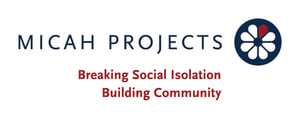
Introducing the Essential 8
Developed by The Australian Cyber Security Centre (ACSC), the Essential Eight is a set of cyber security strategies to help equip organisations with the baseline of information needed to safeguard themselves against cyber attacks.
How the Essential Eight is practically applied depends on the maturity level of the organisation, with more complex organisations requiring more comprehensive safeguarding measures. However, as the name suggests – all eight of these measures are essential in establishing a cyber security baseline.
And as the world increasingly embraces the hybrid work model, the practice of multi-factor authentication (MFA) has cemented its value as a top security measure.
Secure access for a digitised workforce
The recent pandemic has changed work as we know it. It’s driven many organisations to recalibrate their approach to how their people work, where they work, and when they work.
Now, employees are accessing work systems from beyond the boundaries of their office computer. This has brought the need for MFA to the forefront of cyber security.
MFA is a security measure that requires the user to produce at least two proofs of identity to access specific systems and accounts within the organisation. The multi-layered identity confirmation makes it simple for employees to access their accounts while simultaneously making it difficult for non-authorised users to do the same.
How authentication has evolved
The landscape of authentication is rapidly evolving. Just a few short years ago, the foundation of what would become MFA was established when security specialists began endorsing a risk-based access model. At its crux, this model determined legitimacy by evaluating the user, their devices, and the applications accessed.
The risk-based access model quickly gained favour. Before long, it was considered a critical component of cybersecurity strategies, meaning the corporate network was no longer considered to be the ultimate source of security anymore. Instead, risks could be managed by implementing stronger, more expansive, and more effective security controls – like MFA.
Cyber protection that puts people first
Without MFA, it could take just one employee account to be hacked for you to lose your data, public records, or find yourself facing off against ransomware. But when you have MFA included in your cyber security stack – the risk of being infiltrated reduces dramatically.
Best of all – while the inner workings of MFA are comprehensive, the user experience couldn’t be more seamless. Being able to forgo passwords in favour of MFA is boosting productivity and reducing the time wasted on redeeming forgotten and lost passwords.
With the landscape of work ever-changing, putting MFA practices to work for your organisation is essential.
This is an important step to take, which is why we’re here to help.
We’re partnered with the most trusted industry names to help you find the right MFA plan for your organisation. With the helping hands of identity authentication products like Cisco Secure and Cisco Duo, our security experts will get you aligned with the right tools to help your organisation stay safe and thriving as the landscape of work continually evolves.
Related articles
ISO 27001 and ISO 9001: How ISO standards help IT managers
How the Essential Eight is practically applied depends on the maturity level of the organisation, with more complex organisations requiring more comprehensive safeguarding measures. However, as the name suggests – all eight of these measures are essential in establishing a cyber security baseline.
Read articleIlluminating cybersecurity blind spots
How the Essential Eight is practically applied depends on the maturity level of the organisation, with more complex organisations requiring more comprehensive safeguarding measures. However, as the name suggests – all eight of these measures are essential in establishing a cyber security baseline.
Read articleFinding the right fit: E8, NIST CSF, or ISO 27001?
How the Essential Eight is practically applied depends on the maturity level of the organisation, with more complex organisations requiring more comprehensive safeguarding measures. However, as the name suggests – all eight of these measures are essential in establishing a cyber security baseline.
Read article



